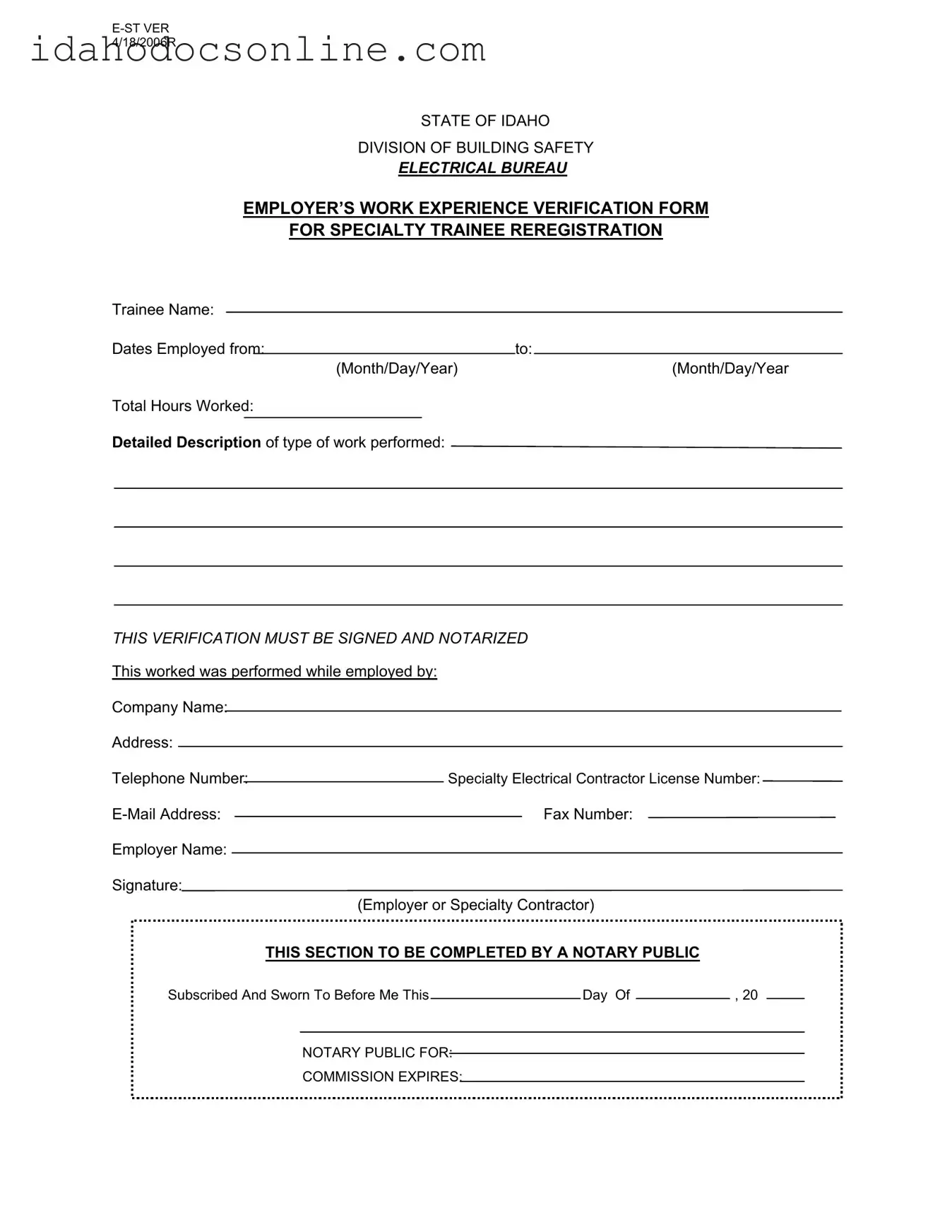Filling out the Idaho Employer’s Work Experience Verification Form can be a straightforward process, but many individuals encounter common pitfalls. One significant mistake is failing to provide accurate dates of employment. The form requires specific start and end dates, and any discrepancies can lead to delays in processing. Ensure that the dates are correct and clearly written to avoid complications.
Another frequent error is neglecting to include the total hours worked. This section is crucial as it demonstrates the extent of the trainee's experience. Without this information, the verification may be deemed incomplete. It’s essential to calculate and enter the total hours accurately.
Many people also overlook the importance of a detailed description of the type of work performed. This section should not be filled out hastily. Providing a thorough and precise description helps to establish the trainee's qualifications and experiences. Vague or incomplete descriptions can hinder the evaluation process.
Signature errors are also common. The form must be signed by the employer or specialty contractor. Failing to sign the form, or signing in the wrong section, can render it invalid. Always double-check that the signature is present and in the correct location.
Notarization is a critical step that some individuals forget. The form explicitly states that it must be signed and notarized. Without a notary public's signature and seal, the form cannot be processed. Make sure to arrange for notarization before submitting the document.
Providing incorrect or outdated contact information is another mistake that can complicate the verification process. The employer's address, telephone number, and email must be current. This ensures that any follow-up questions can be addressed promptly.
Lastly, many individuals fail to review the entire form before submission. A thorough review can catch errors and omissions that could lead to delays. Taking the time to double-check all entries can save significant time and frustration in the long run.

